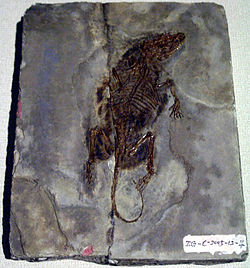| Zhangheotheriidae | |
|---|---|
 | |
| Zhangheotherium quinquecuspidens | |
| Scientific classification | |
| Kingdom: | Animalia |
| Phylum: | Chordata |
| Class: | Mammalia |
| Order: | † Symmetrodonta |
| Superfamily: | † Spalacotherioidea |
| Family: | † Zhangheotheriidae Rougier, 2003 |
| Genera | |
| |
Zhangheotheriidae is a possibly paraphyletic [2] family of "symmetrodont" mammals that is currently known from Early Cretaceous deposits in China and Russia. Six genera are currently recognized, Anebodon , Kiyatherium , Maotherium , Ningchengodon , Origolestes , and Zhangheotherium . [2] [3] [4]





